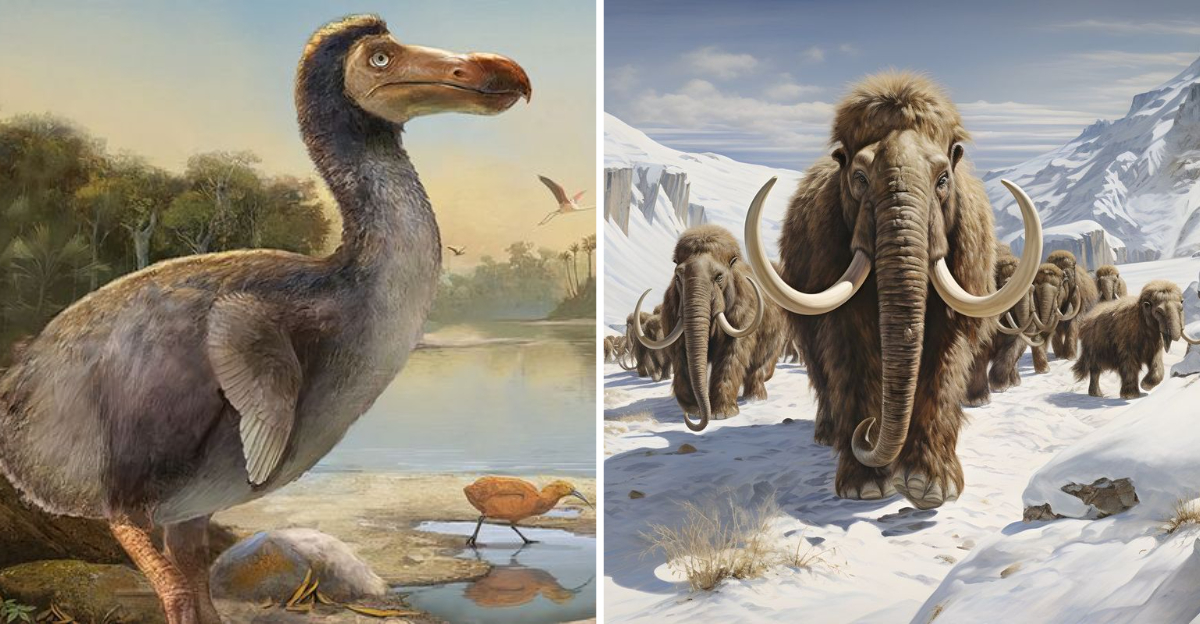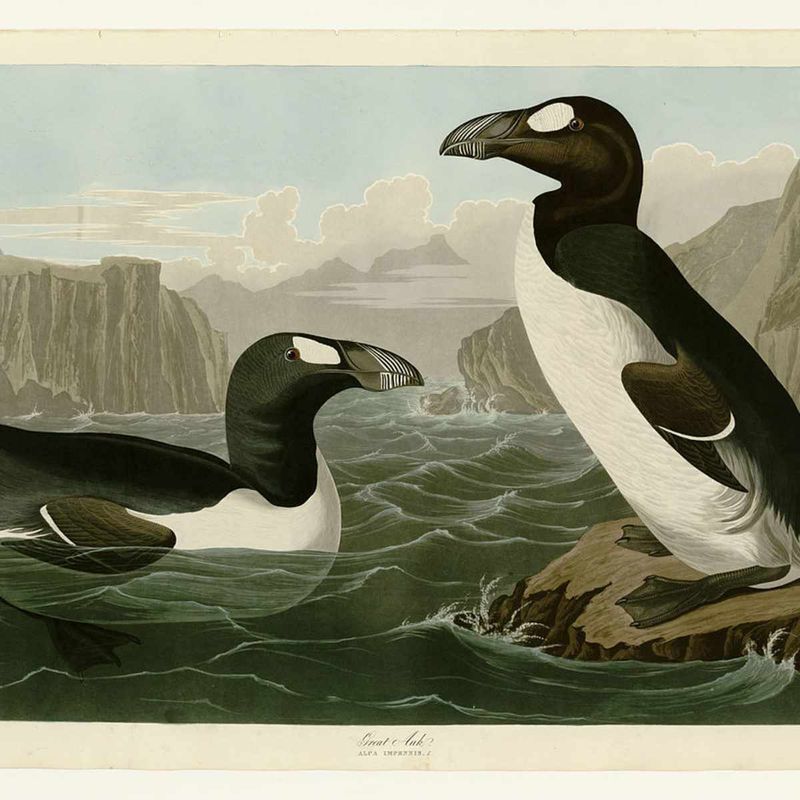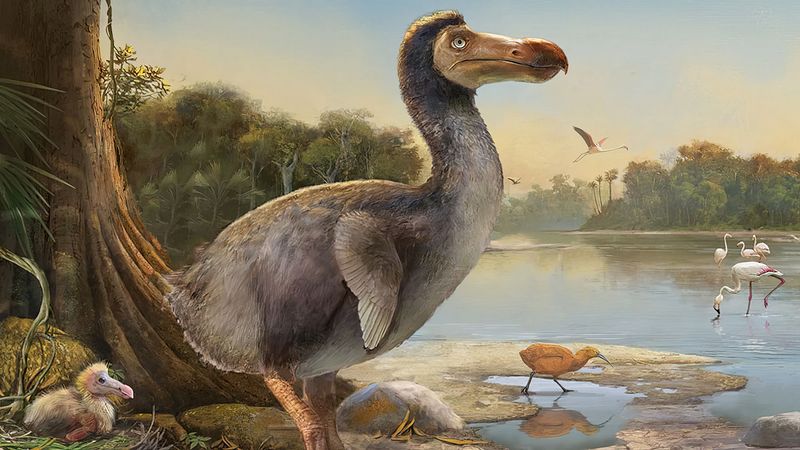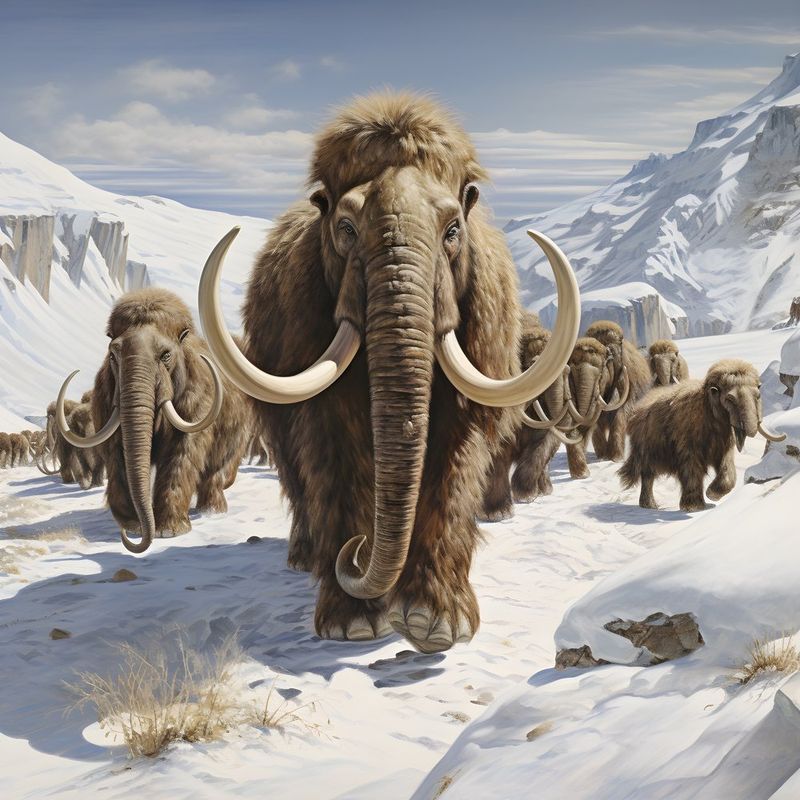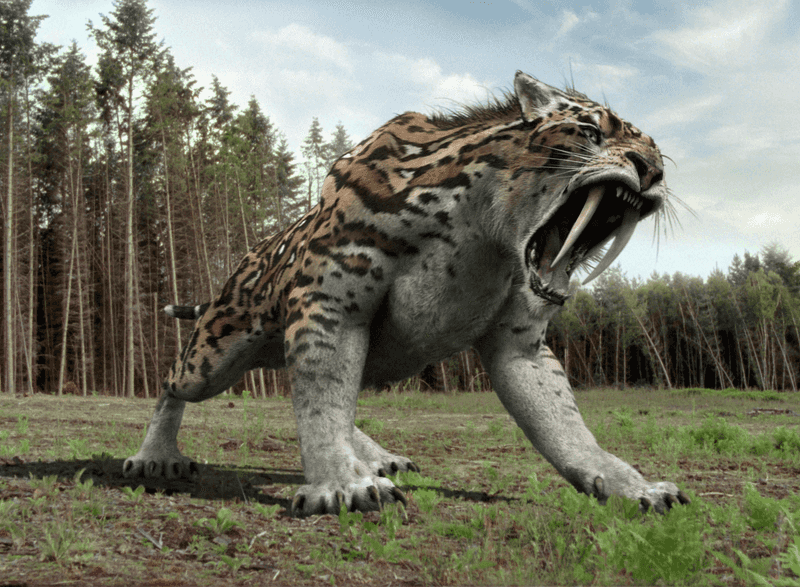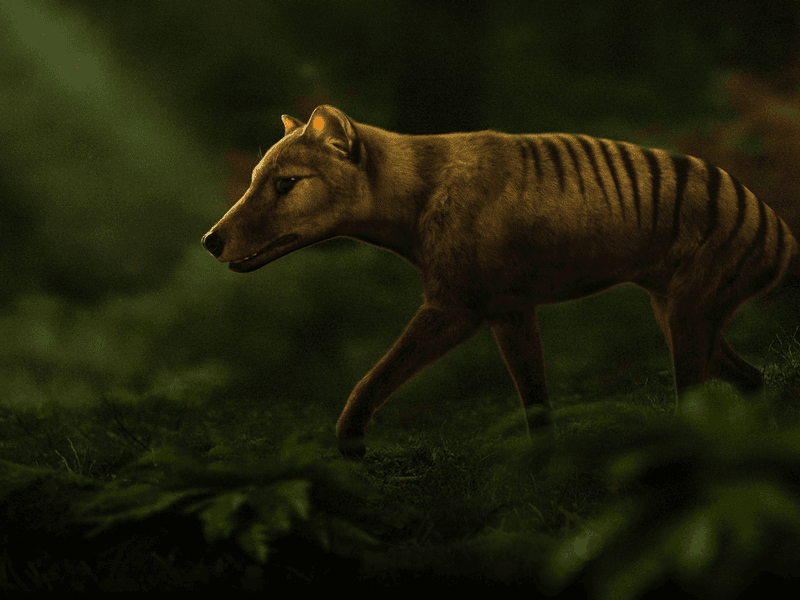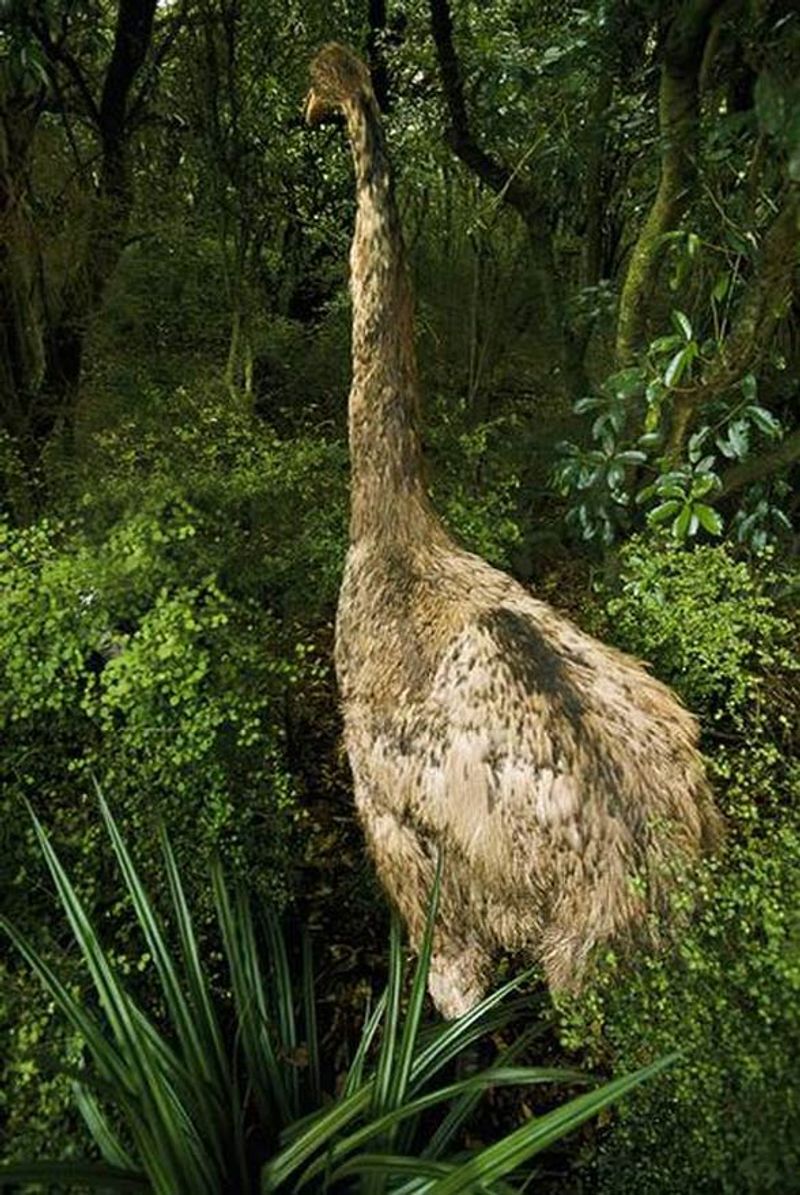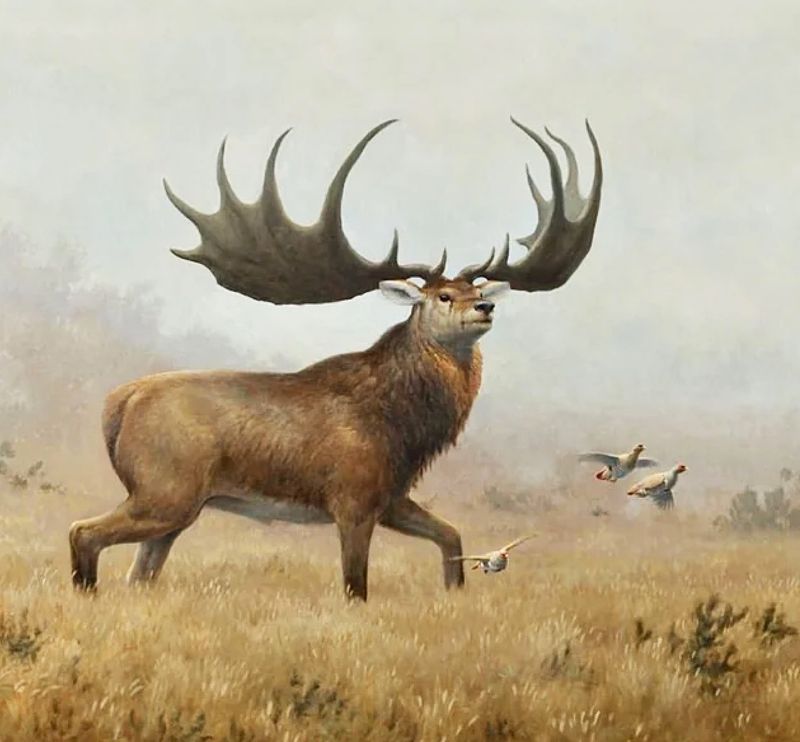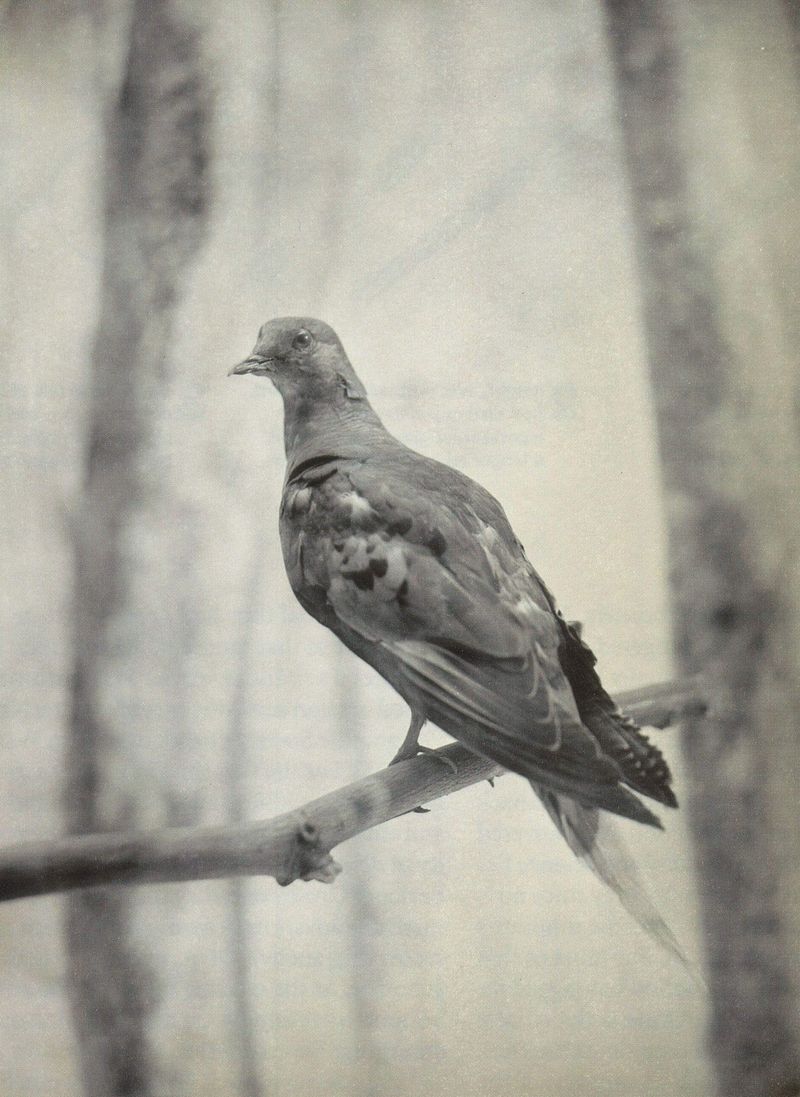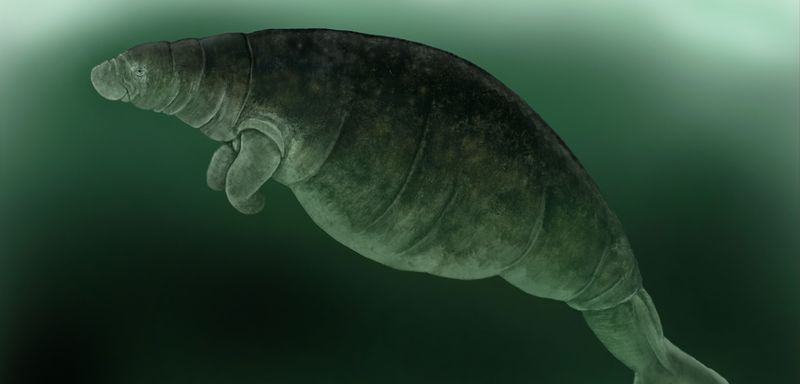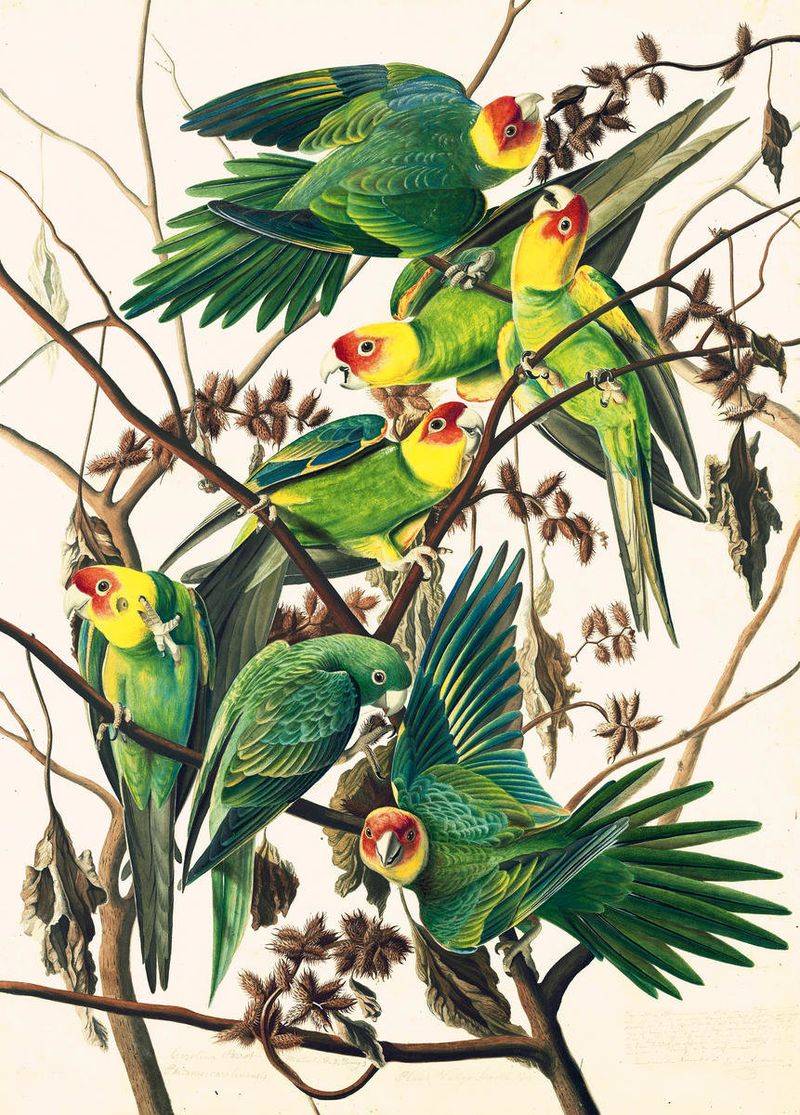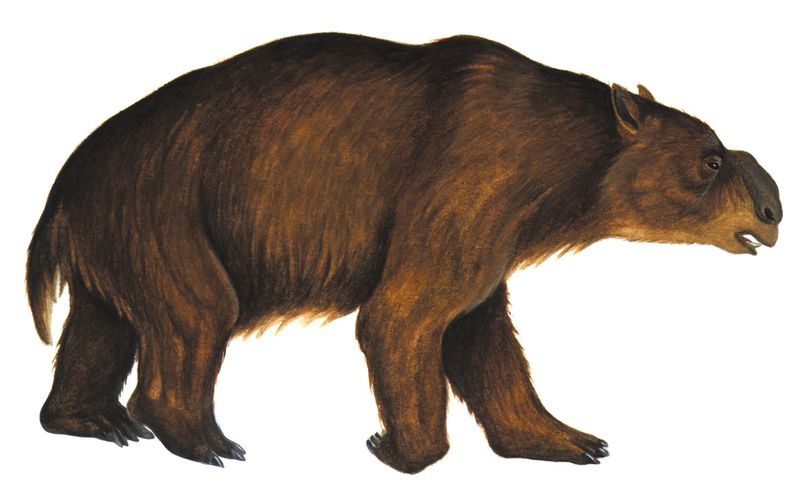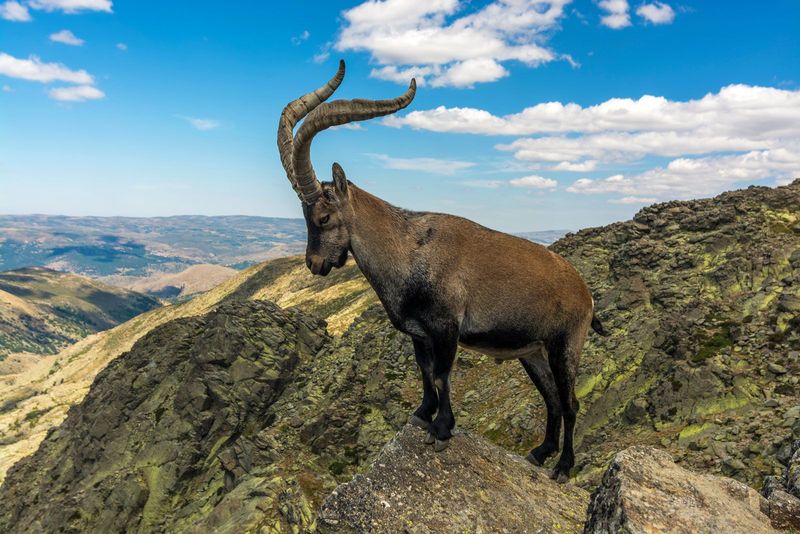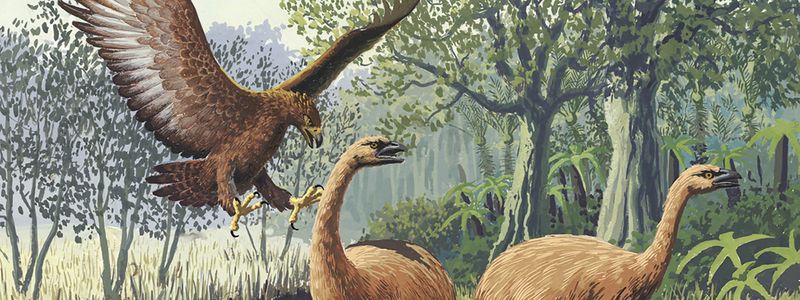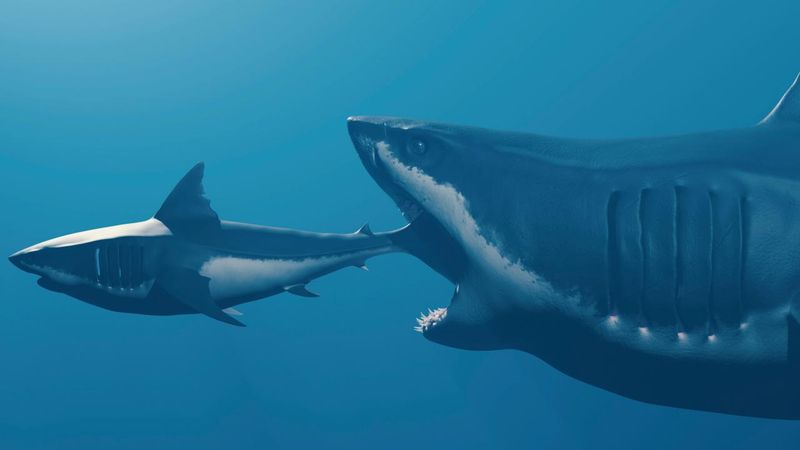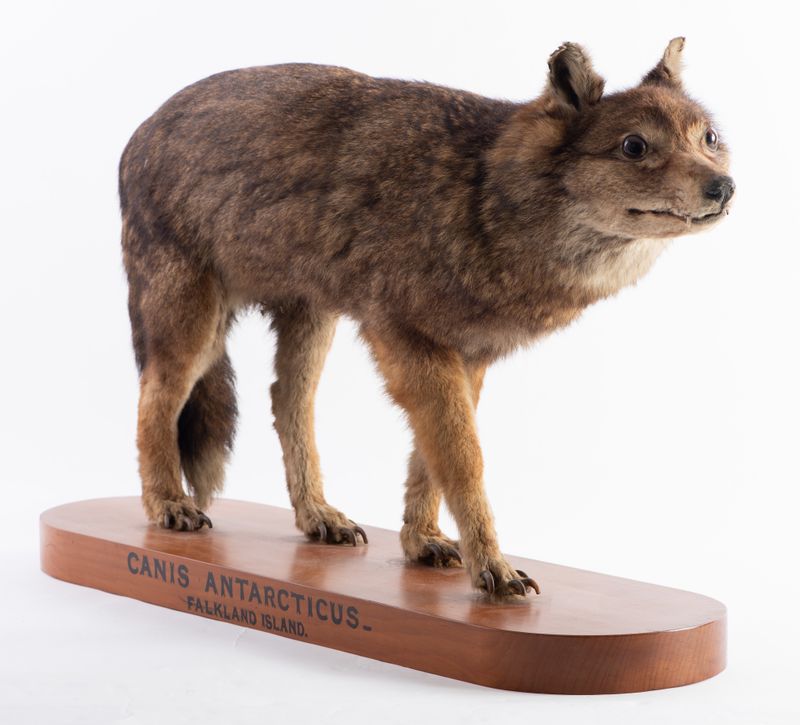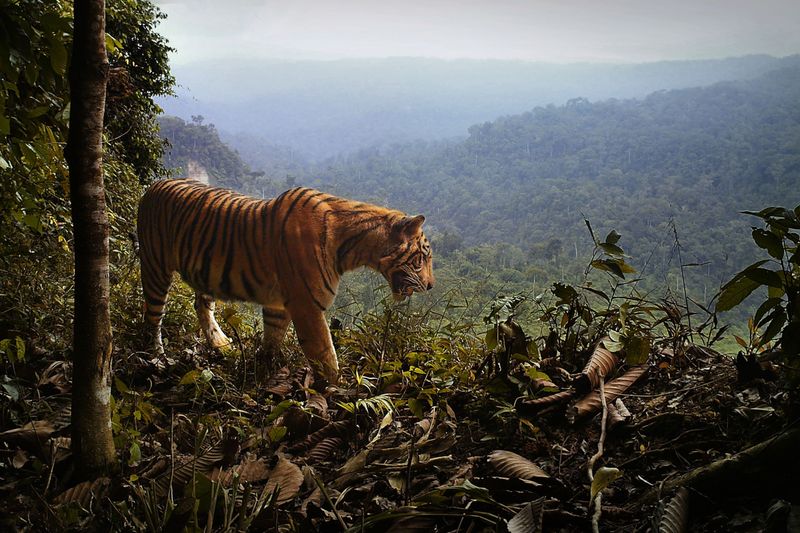Throughout Earth’s history, countless animals have graced our planet, showcasing remarkable diversity. Sadly, many of these fascinating species have vanished due to natural changes and human activity. From majestic giants to bizarre creatures, each of these extinct animals left a lasting mark. In this blog post, we explore 17 such animals that we wish were still around today.
1. Great Auk
The great auk, standing proudly on North Atlantic cliffs, was a magnificent sight. Sadly, these large, flightless seabirds were hunted for their feathers and meat. Their absence is a stark reminder of the delicate balance between nature and human activity.
2. Dodo
The dodo, with its chubby body and peculiar beak, once waddled freely on Mauritius. Endearing and defenseless, these flightless birds fell victim to sailors and invasive species in the 1600s. Picture their gentle eyes and curious nature, a sight to behold on the island’s sandy shores.
3. Quagga
The quagga, with its half-striped body, roamed the African plains with a distinctive flair. This subspecies of zebra, extinct in the 19th century, captivated the imagination with its unusual pattern. A symbol of nature’s creativity, its loss underscores the importance of conservation.
4. Woolly Mammoth
Imagine a colossal creature with long, shaggy fur and sweeping tusks, roaming the icy plains. The woolly mammoth, closely related to today’s elephants, was a master of the cold. These gentle giants provided food, clothing, and tools for early humans, a true companion of the ice age.
5. Saber-Toothed Tiger
With fearsome fangs and a muscular frame, the saber-toothed tiger was a symbol of prehistoric might. Envision this apex predator stalking the forests, its every move a blend of grace and power. Though extinct, its legacy endures in our imaginations as the ultimate hunter.
6. Tasmanian Tiger
In the heart of Tasmania, the thylacine, or Tasmanian tiger, was a marvel of evolution. This striped-back marsupial was both predator and prey, navigating a landscape filled with challenges. Driven to extinction in the early 20th century, its story is a poignant lesson on coexistence.
7. Moa
Towering at over 10 feet, the moa was a giant among birds. These flightless wonders once graced New Zealand, their presence commanding the forests. Hunted to extinction by early Māori settlers, the moa’s tale is one of respect and regret, a chapter closed too soon.
8. Irish Elk
Picture a deer with antlers so grand they seem to touch the sky. The Irish elk, a colossal deer, roamed across ancient landscapes. Its majestic antlers, spanning up to 12 feet, were a wonder of nature. Although not an elk, its legacy is etched in the annals of natural history.
9. Passenger Pigeon
Once a spectacle of the skies, passenger pigeons darkened the horizon with their numbers. These North American birds, once billions strong, were reduced to none through relentless hunting and habitat destruction. Their story is a testament to the devastating impact of human disregard.
10. Steller’s Sea Cow
Gliding through the ocean like gentle giants, Steller’s sea cows were relatives of manatees, discovered in 1741. Within 27 years, these peaceful marine mammals were hunted to extinction. Their slow, graceful movements and massive size made them easy targets, leaving behind an oceanic void.
11. Carolina Parakeet
North America’s only native parrot, the Carolina parakeet, was a burst of color and song. Bright green feathers adorned this social bird, flitting through Eastern forests. Extinct due to habitat destruction and hunting, their absence leaves a silent, empty space amidst the trees.
12. Diprotodon
Imagine a creature resembling a giant wombat, peacefully grazing ancient plains. The diprotodon, the largest known marsupial, lived during the Pleistocene era. These gentle herbivores thrived in a world lost to time, their existence a curious echo of Australia’s unique biodiversity.
13. Pyrenean Ibex
Balancing on rugged cliffs, the Pyrenean ibex was a mountain goat of remarkable ability. Declared extinct in 2000, its brief revival through cloning ended in tragedy. With curved horns and agile grace, it embodied resilience, a poignant reminder of nature’s fragility.
14. Haast’s Eagle
Ruling the skies with an impressive wingspan, Haast’s eagle was a formidable hunter. This giant bird of prey once soared over New Zealand, hunting moa with precision. As the moa vanished, so did this majestic bird, a symbol of the interconnectedness of ecosystems.
15. Megalodon
The megalodon, an oceanic giant, dwarfed today’s great whites with its immense size. Imagine a shark so large it dominated the seas, its jaws a testament to prehistoric power. Though it swam the oceans millions of years ago, its legend endures in the fossilized echoes of teeth and bones.
16. Falkland Islands Wolf
The warrah, or Falkland Islands wolf, was the archipelago’s only native land mammal. These solitary wanderers roamed the windswept plains, their extinction in the 1870s a loss of ecological intricacy. Their cautious, curious demeanor remains a poignant memory in the islands’ natural history.
17. Bali Tiger
The Bali tiger, smallest of its kind, prowled the island’s dense jungles with stealth and grace. Habitat loss and hunting led to its extinction in the 20th century. With intense eyes and a subtle power, it was a symbol of the wild heart of Bali, now a silent shadow in the annals of time.
